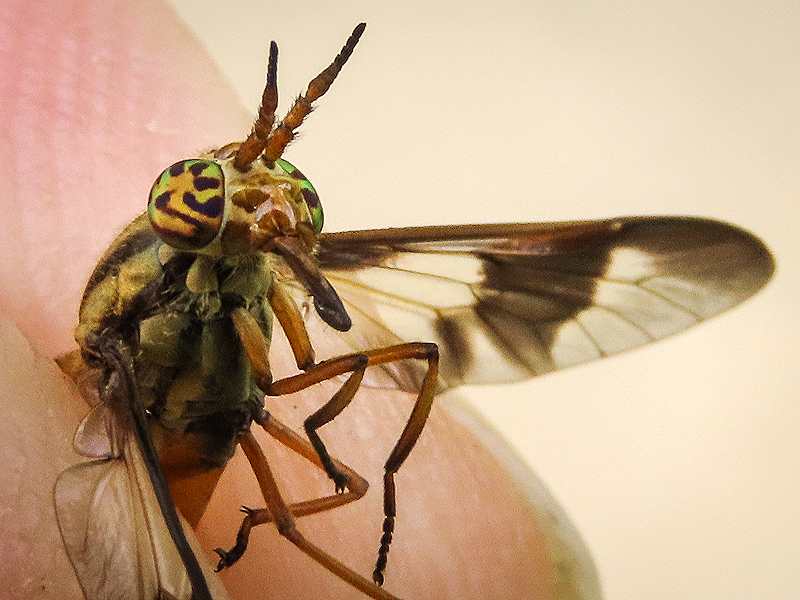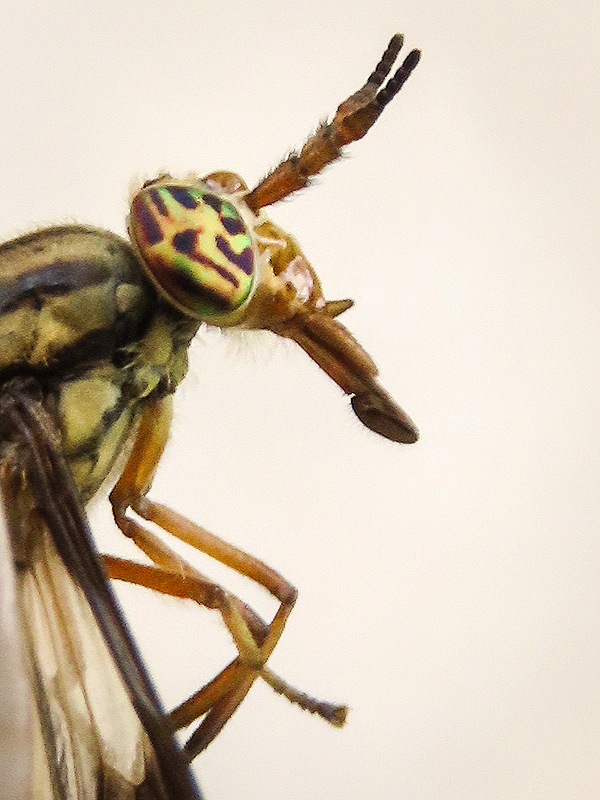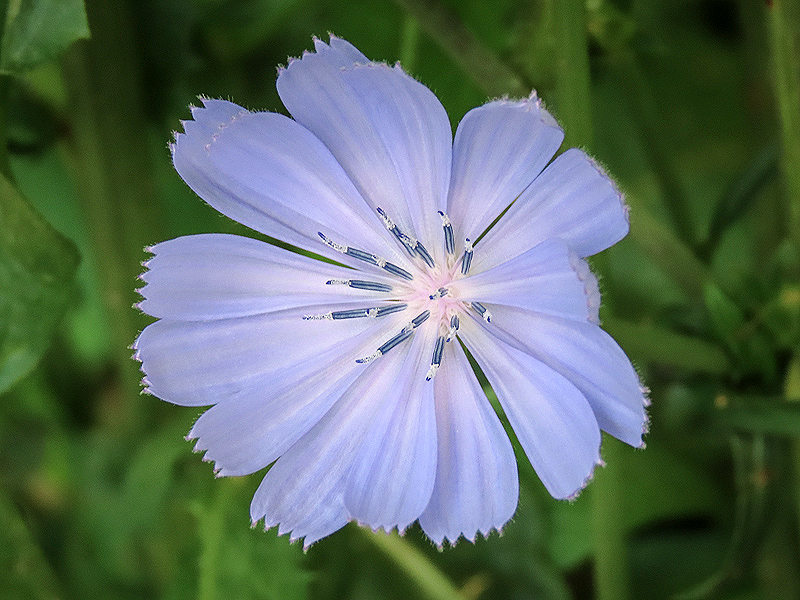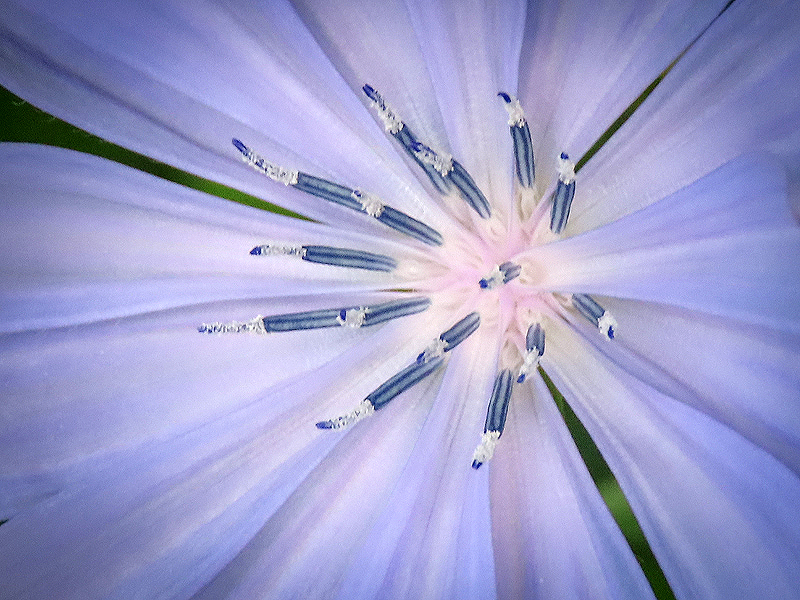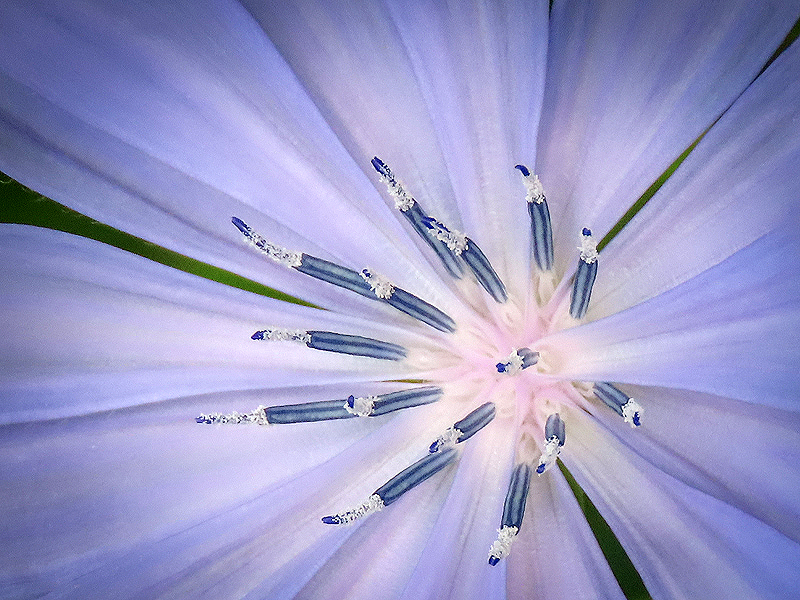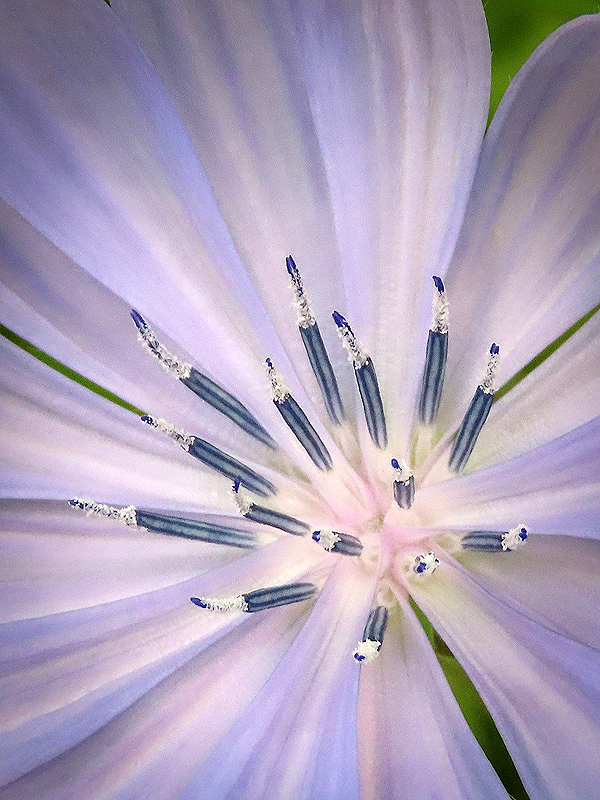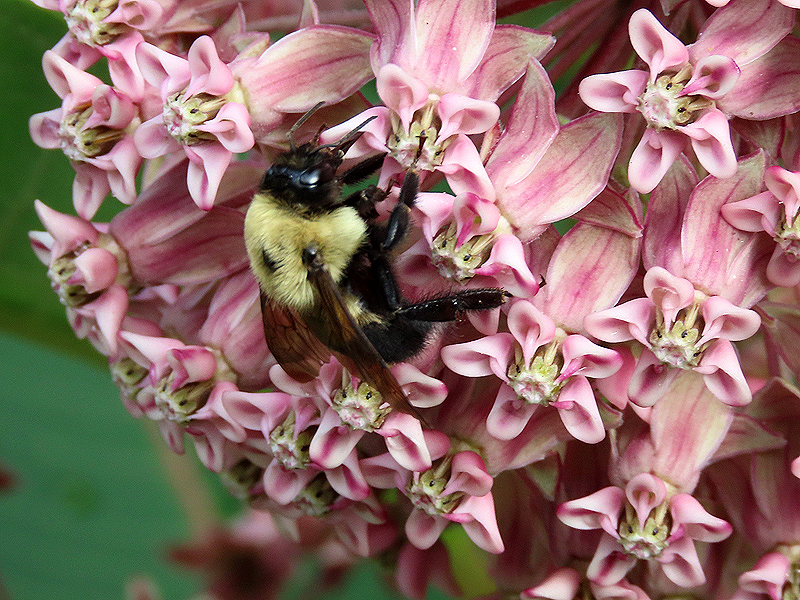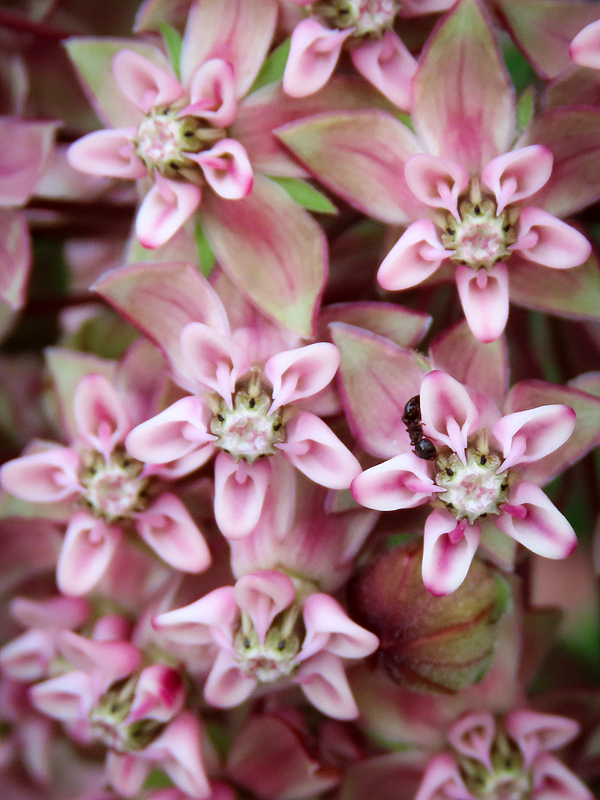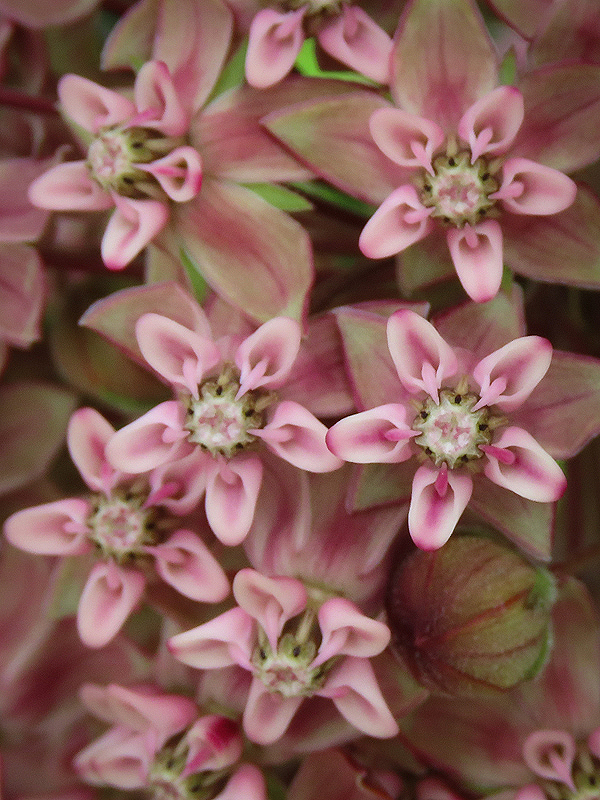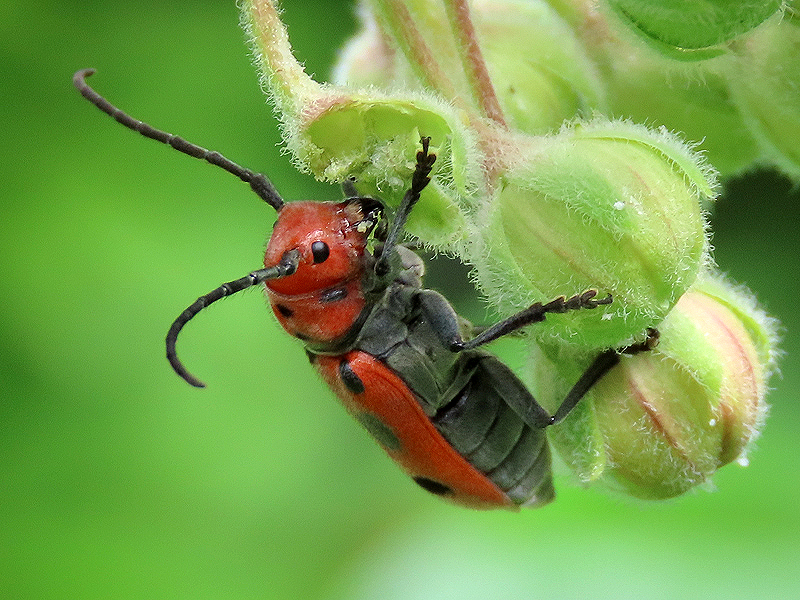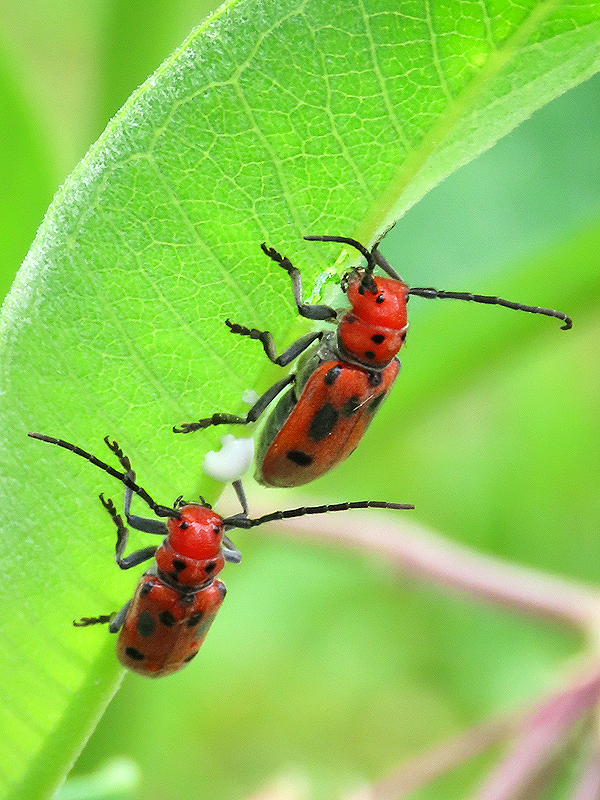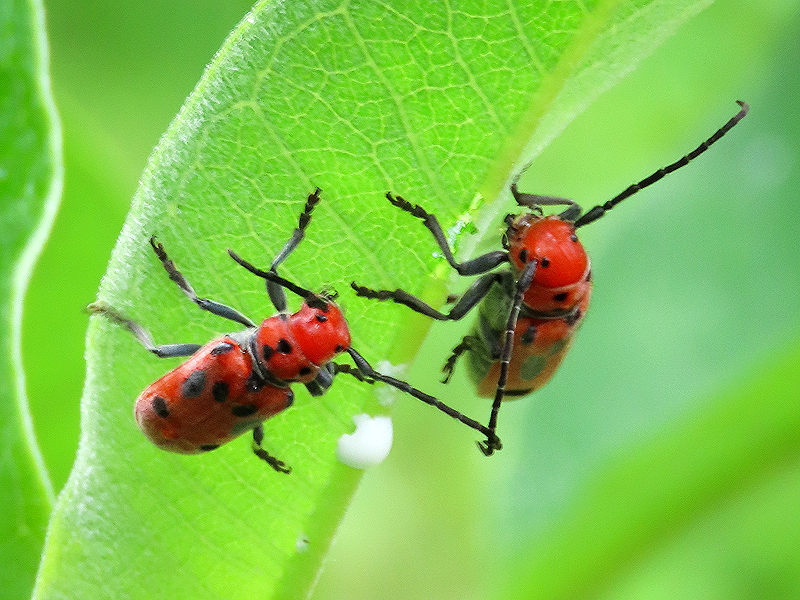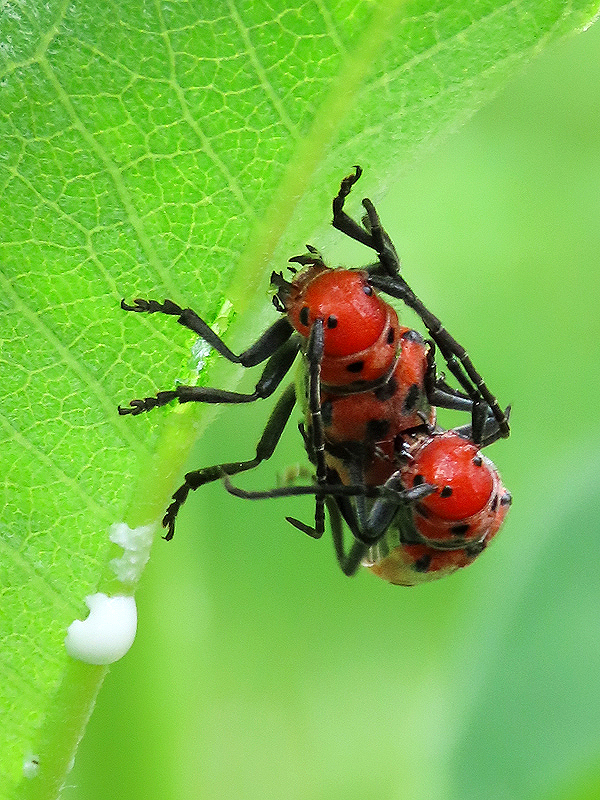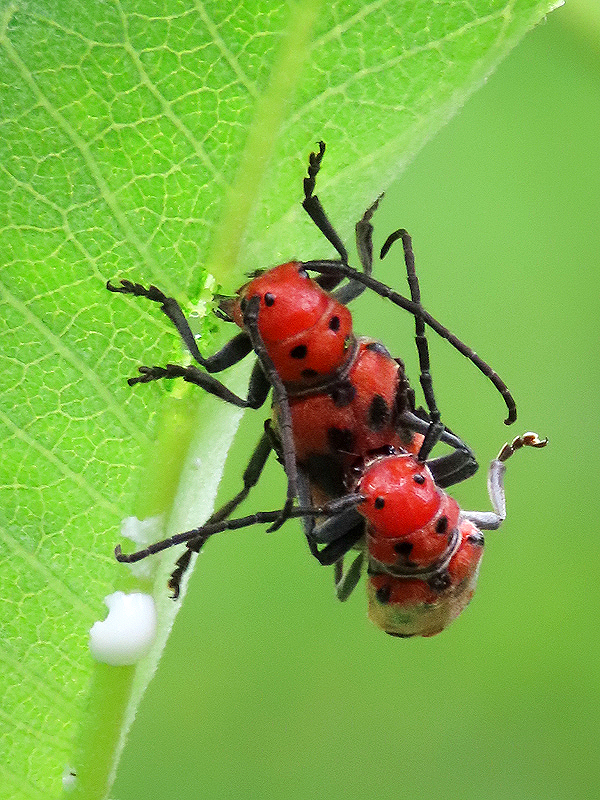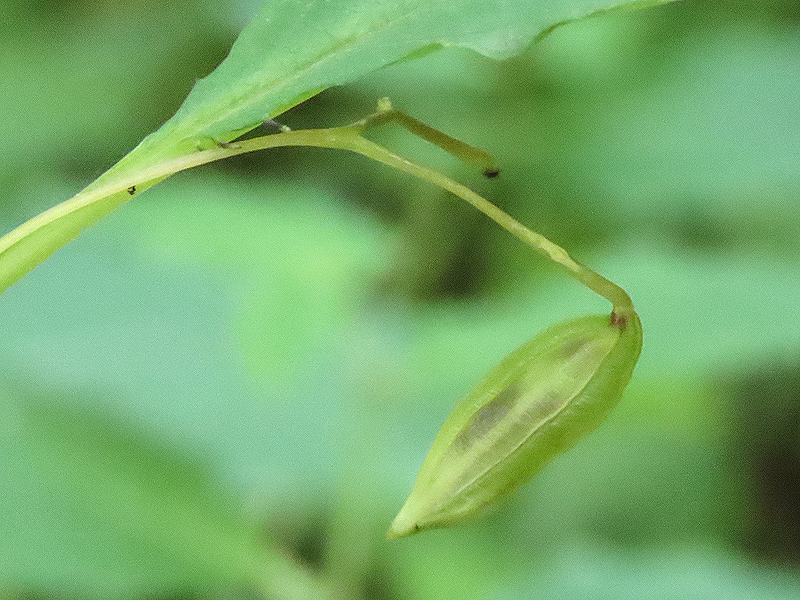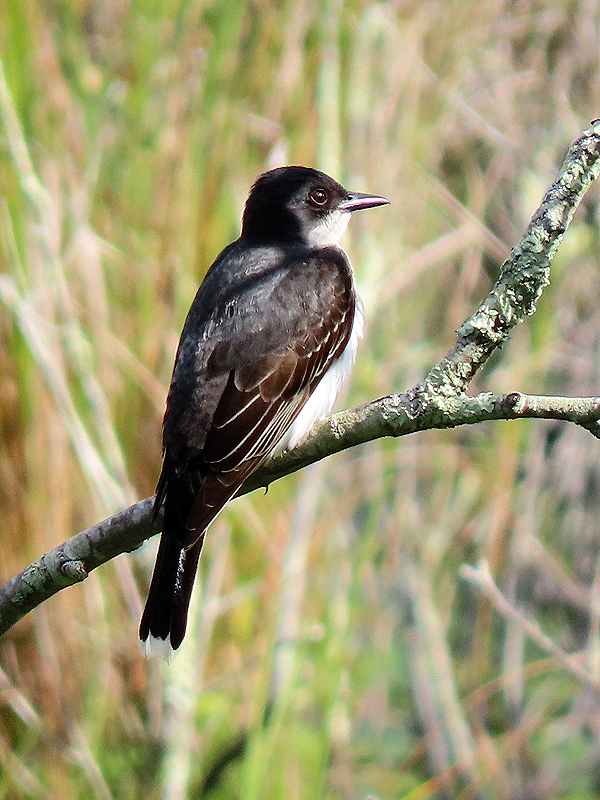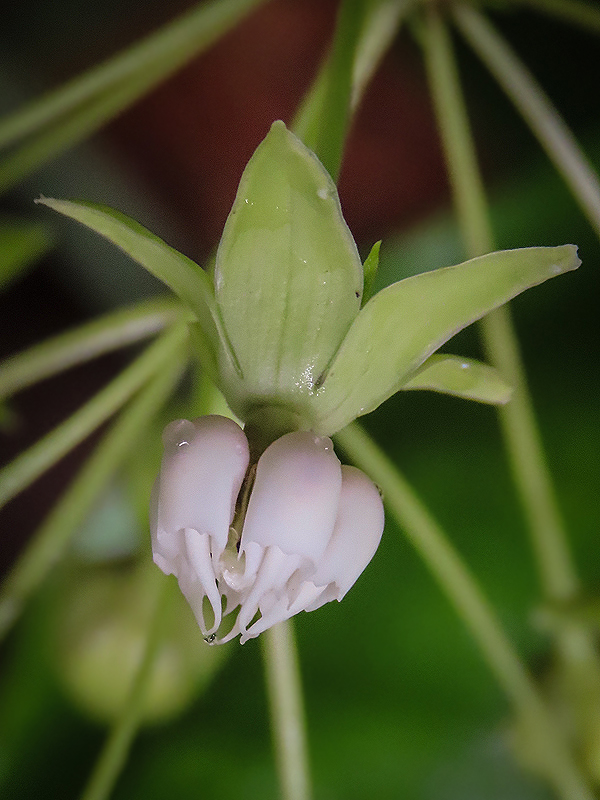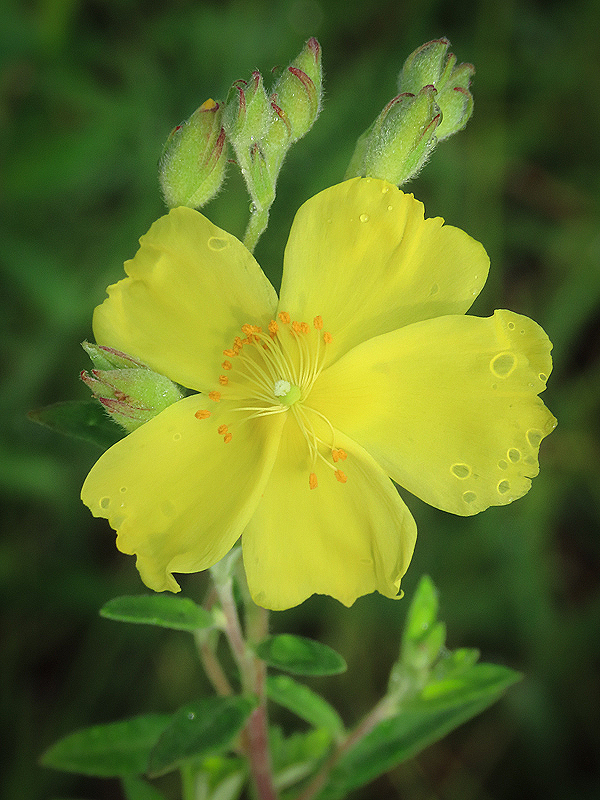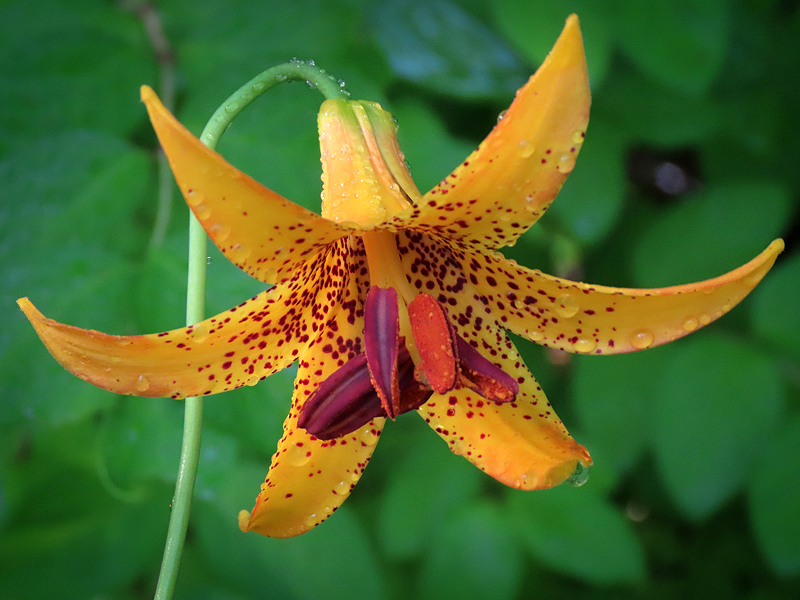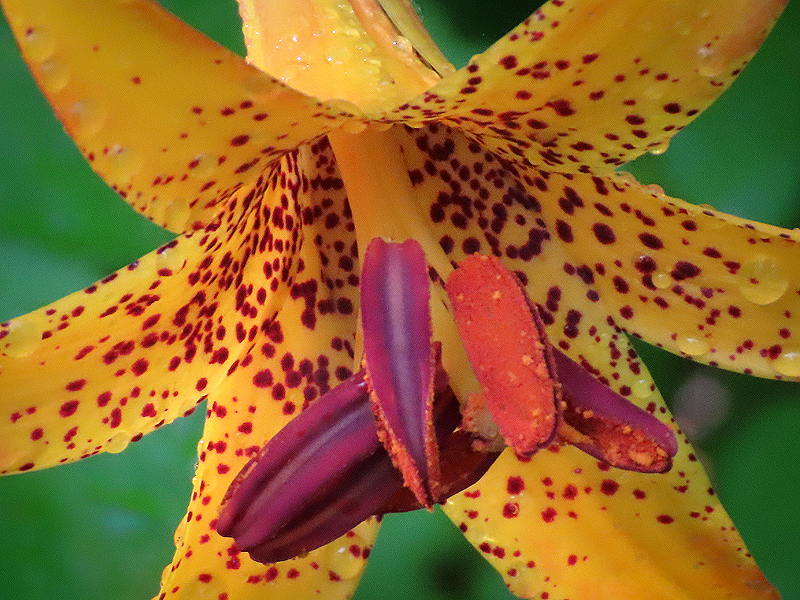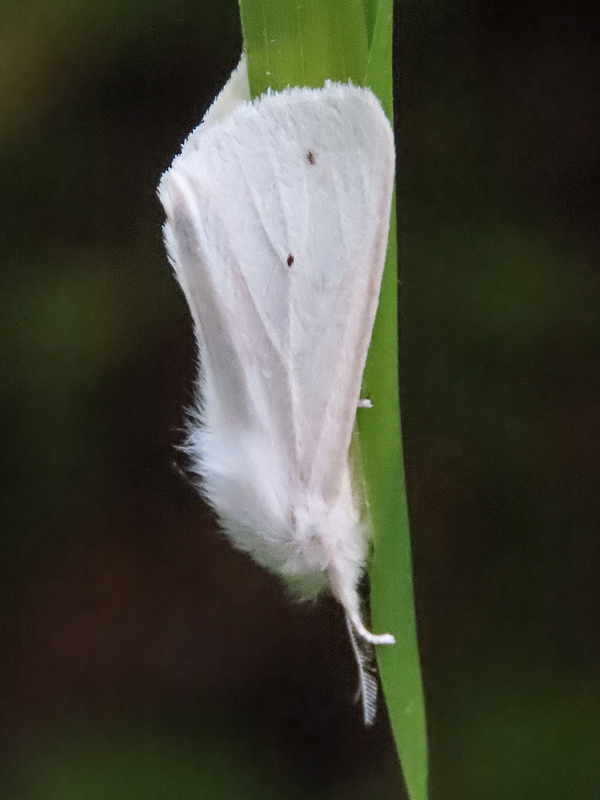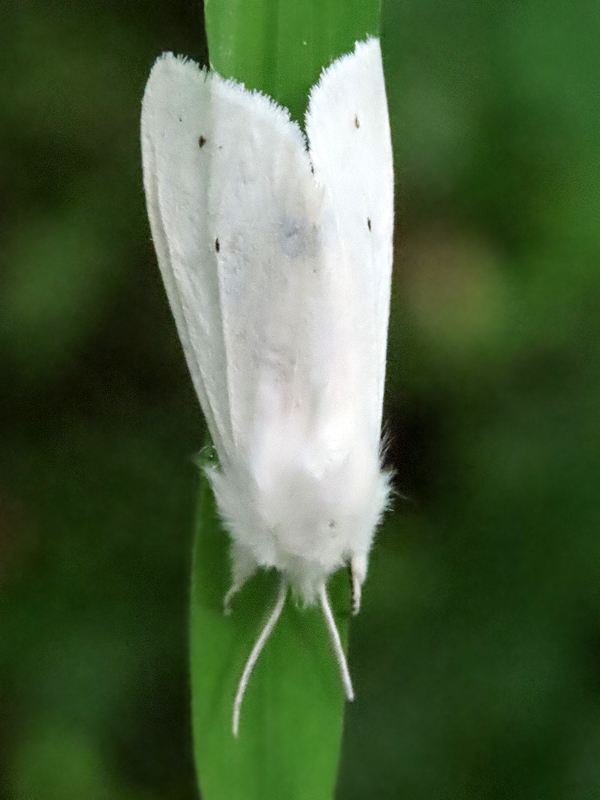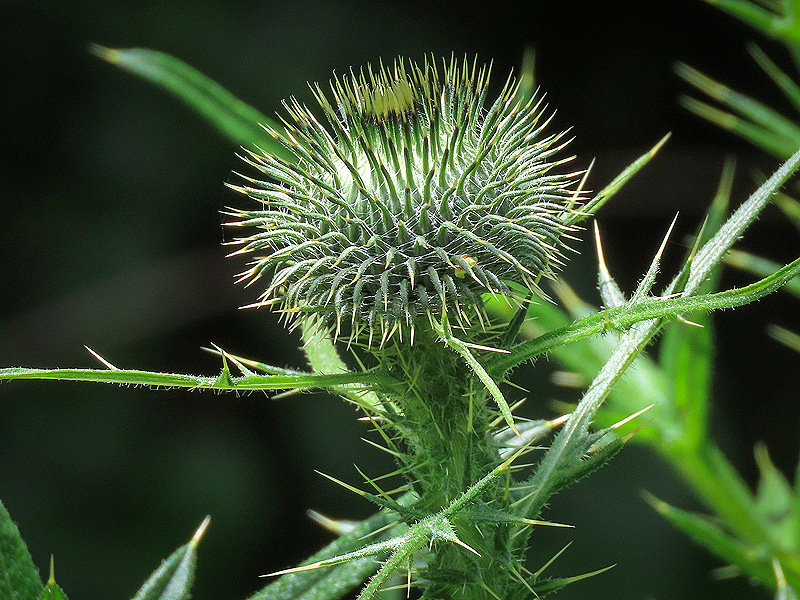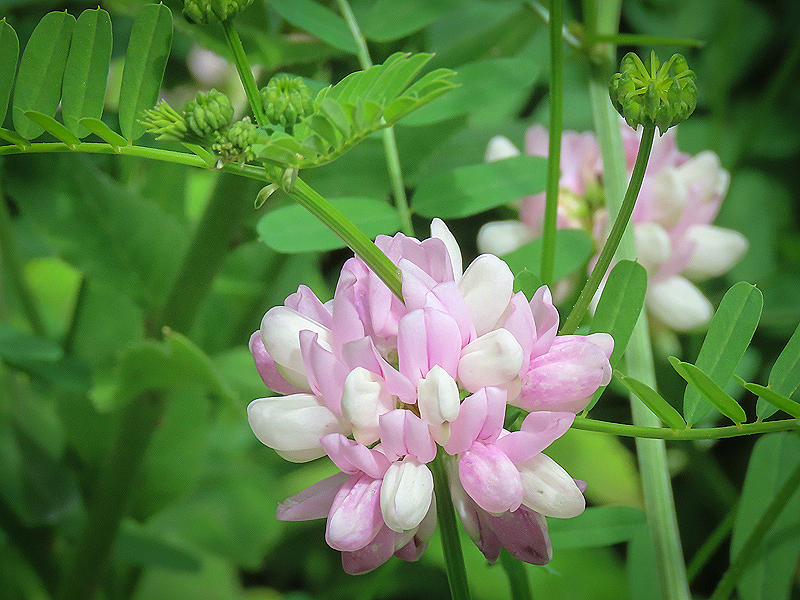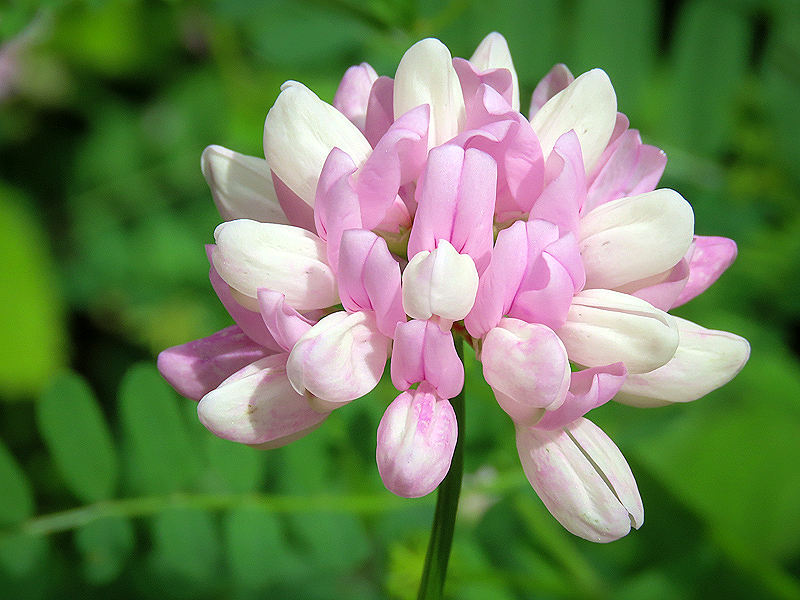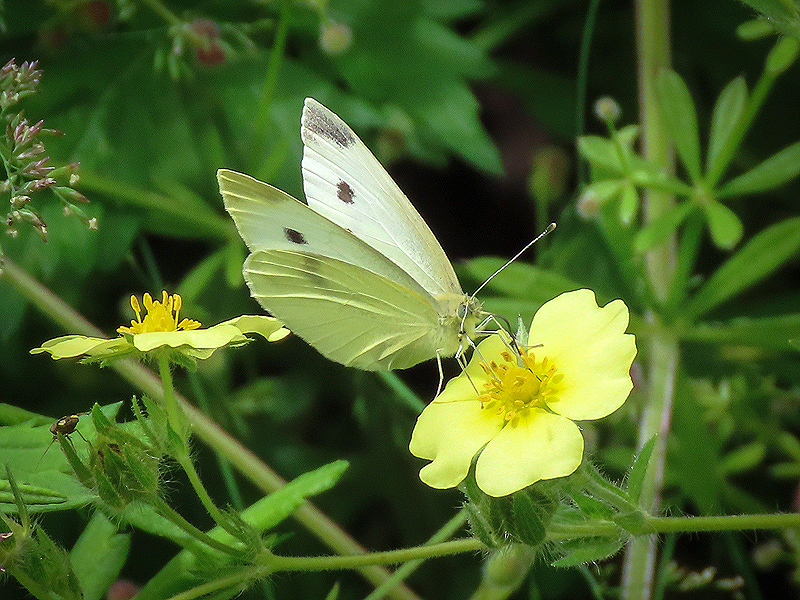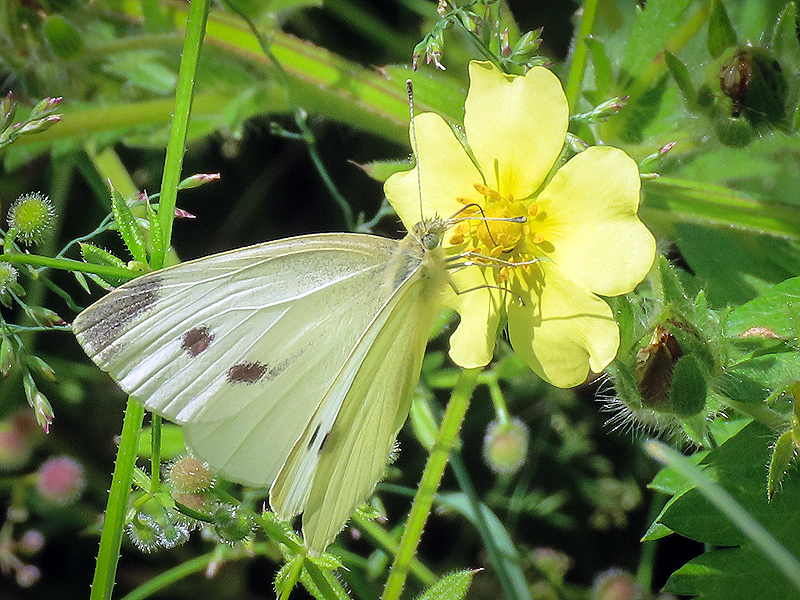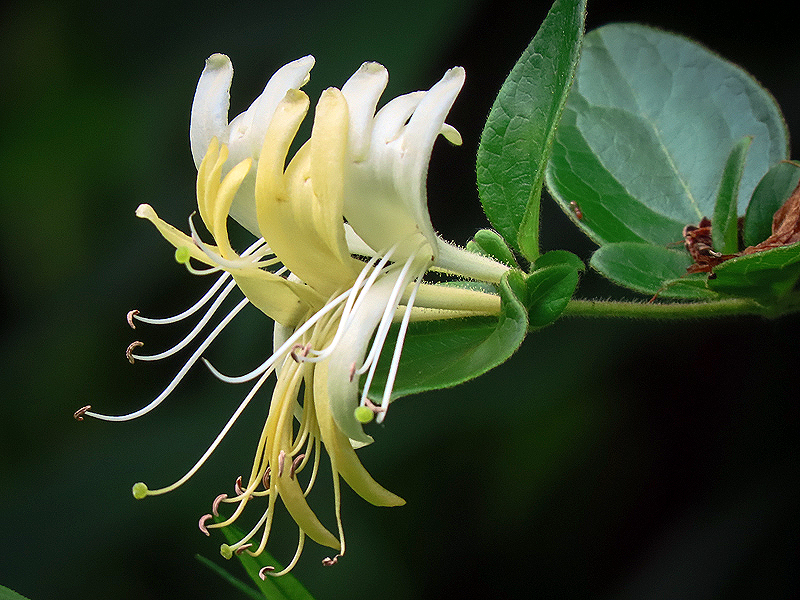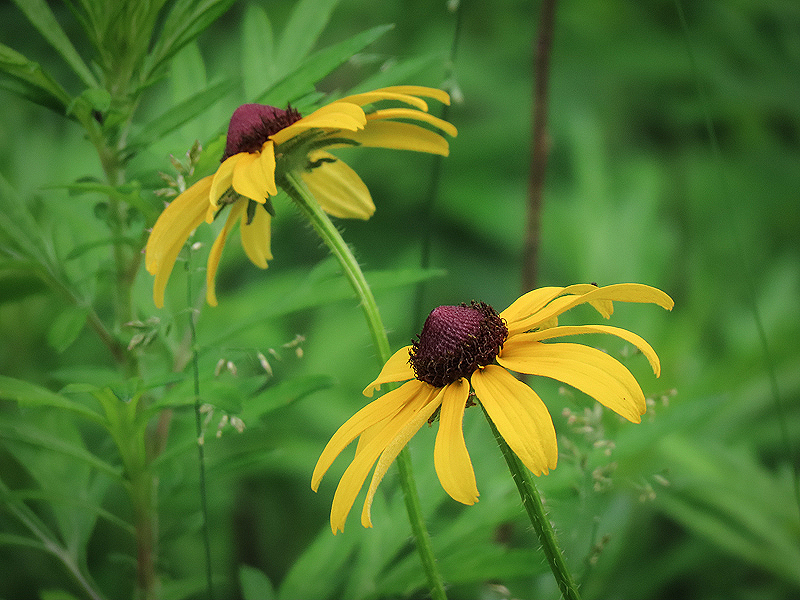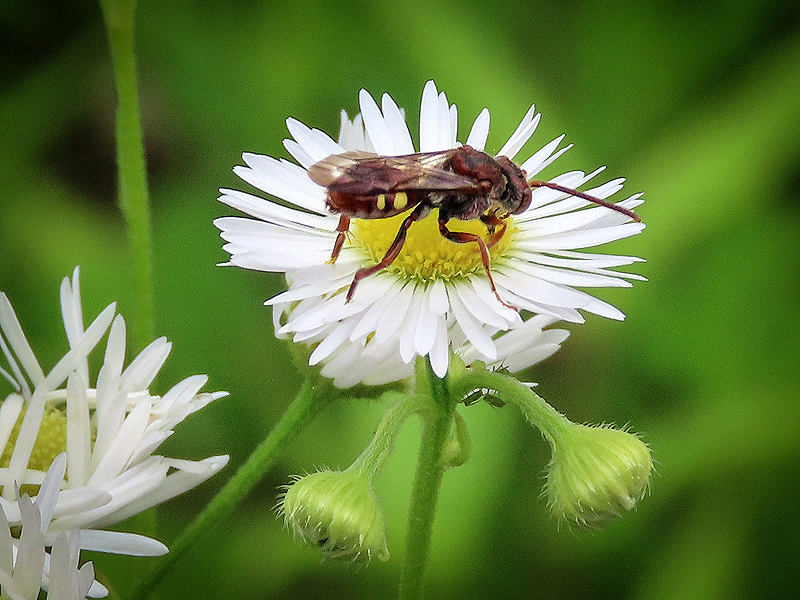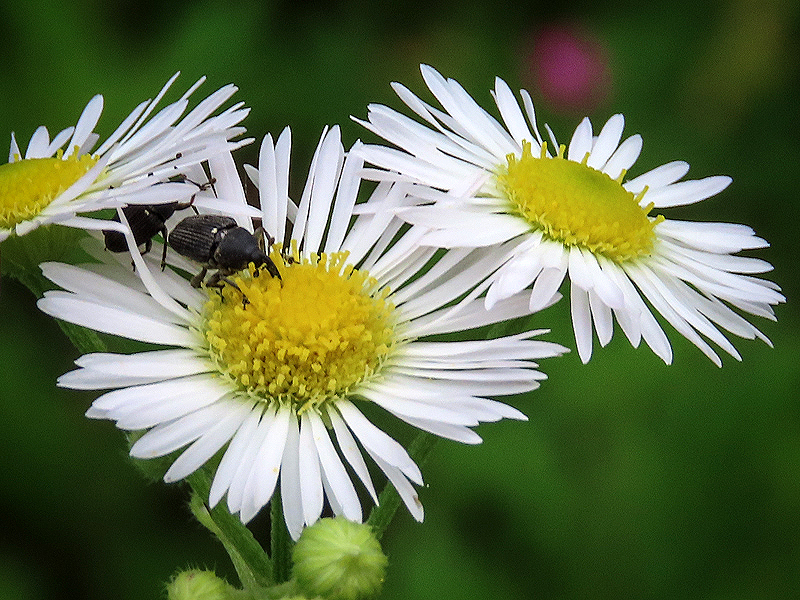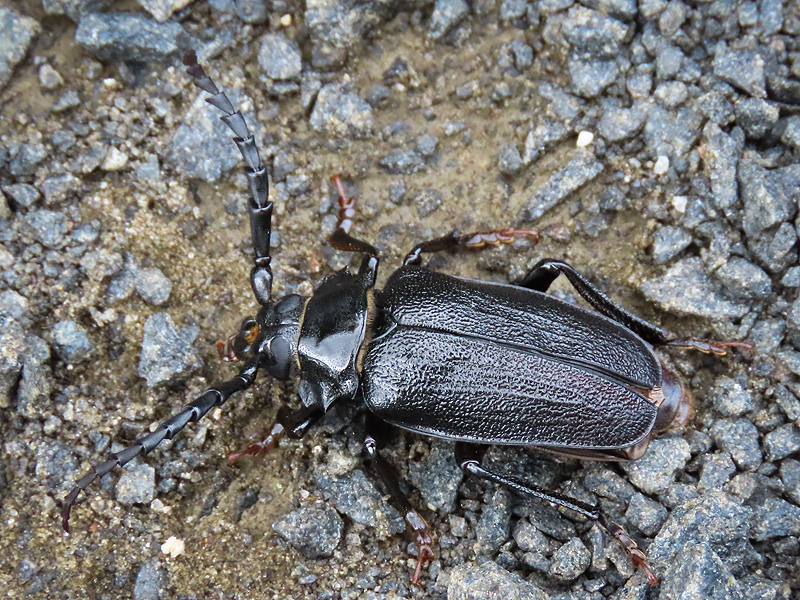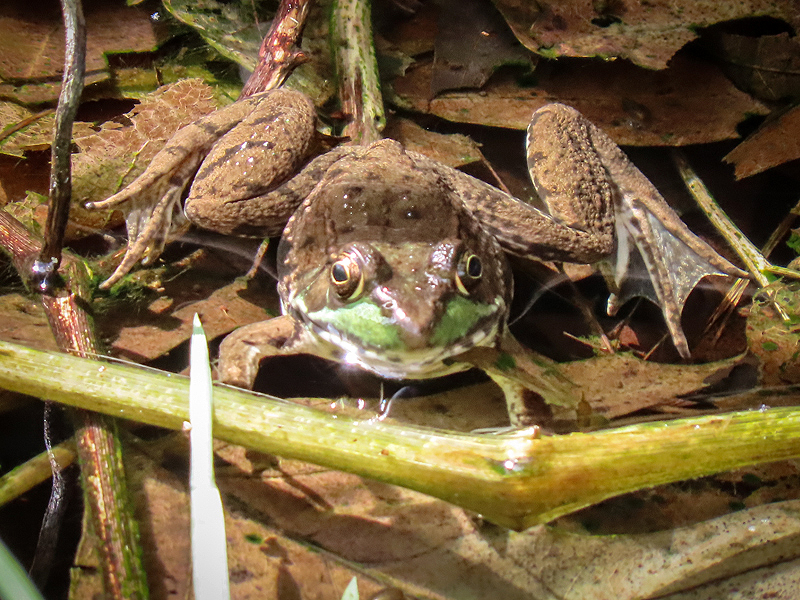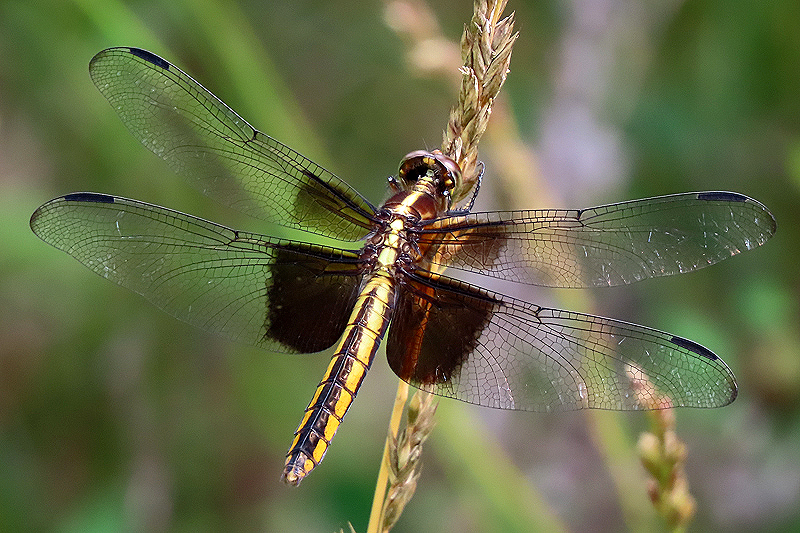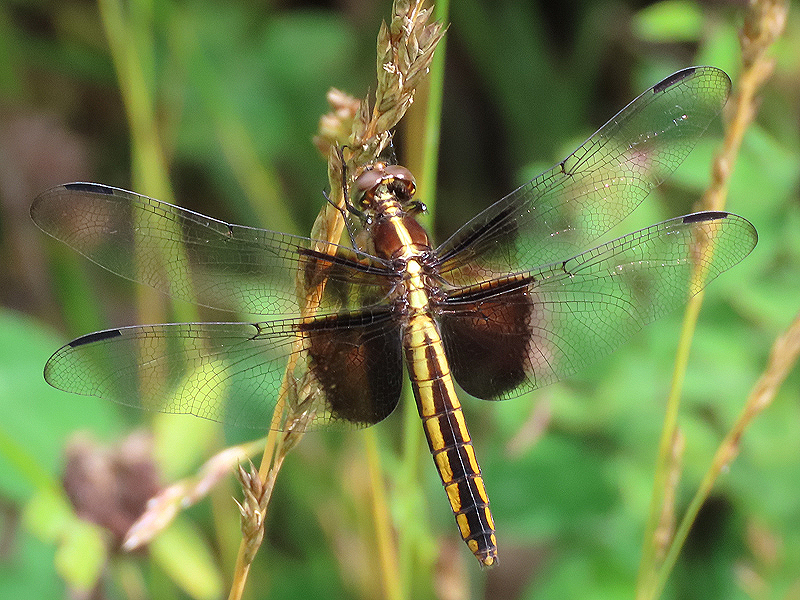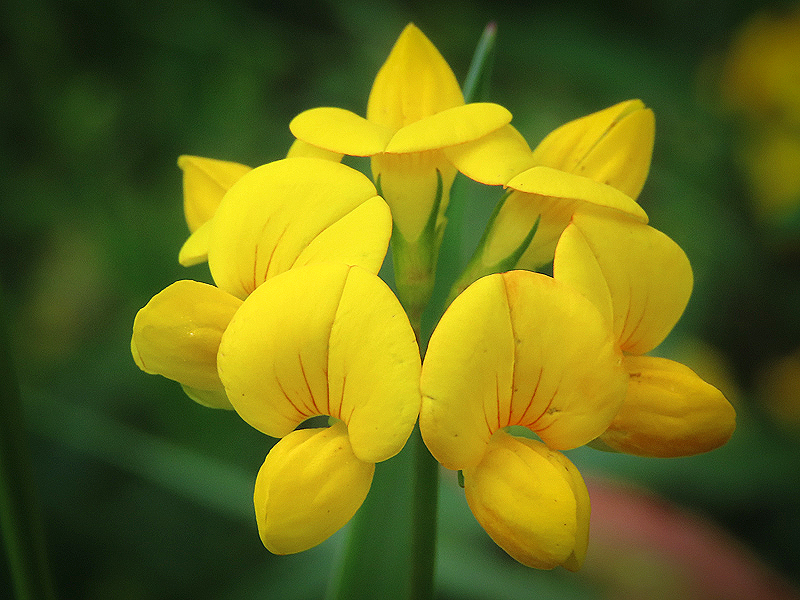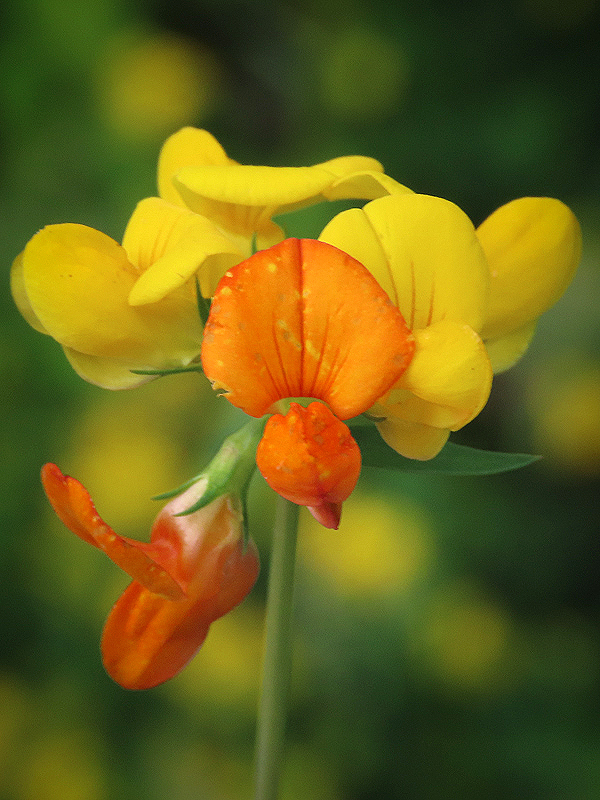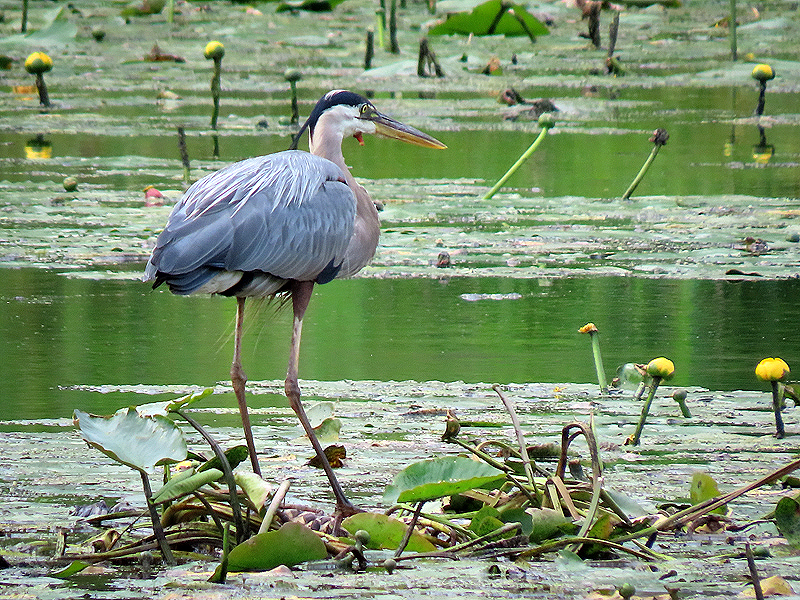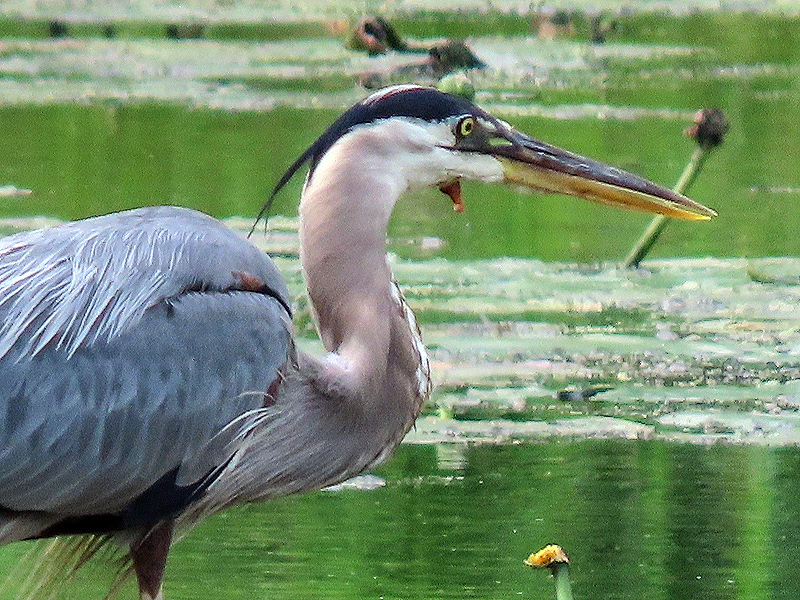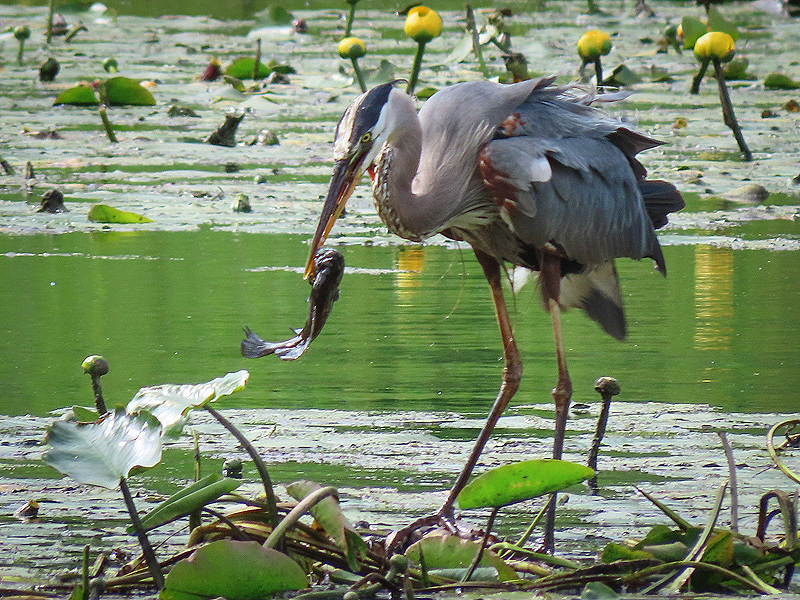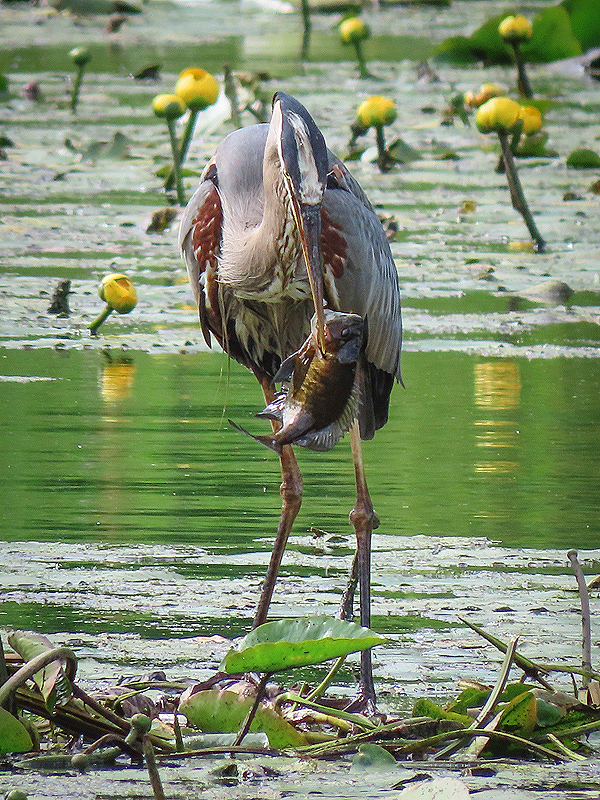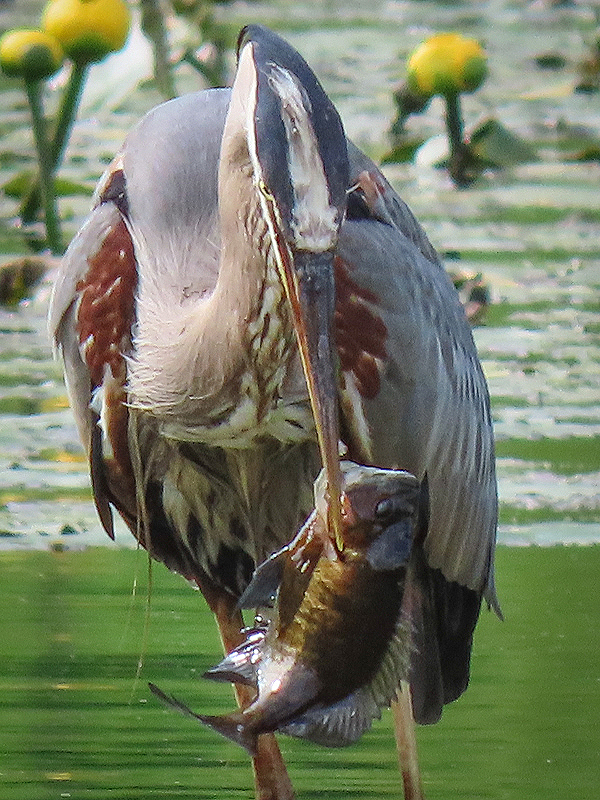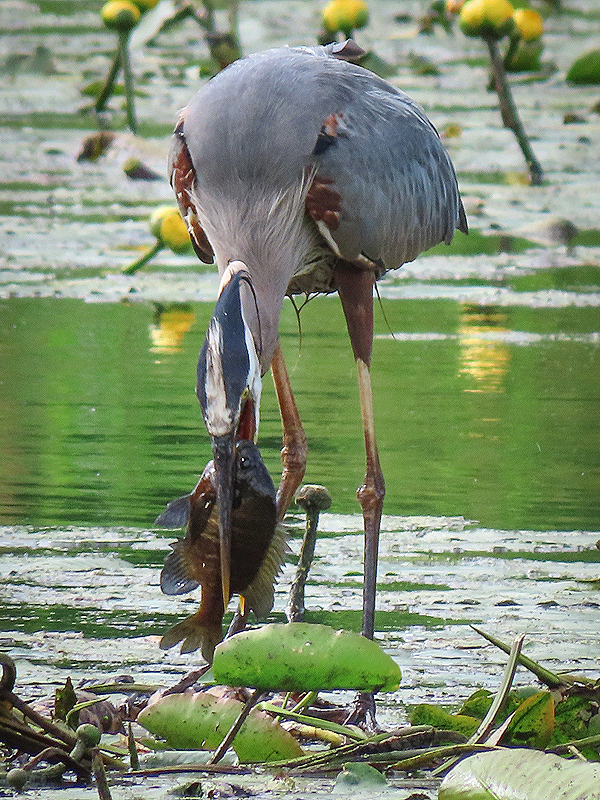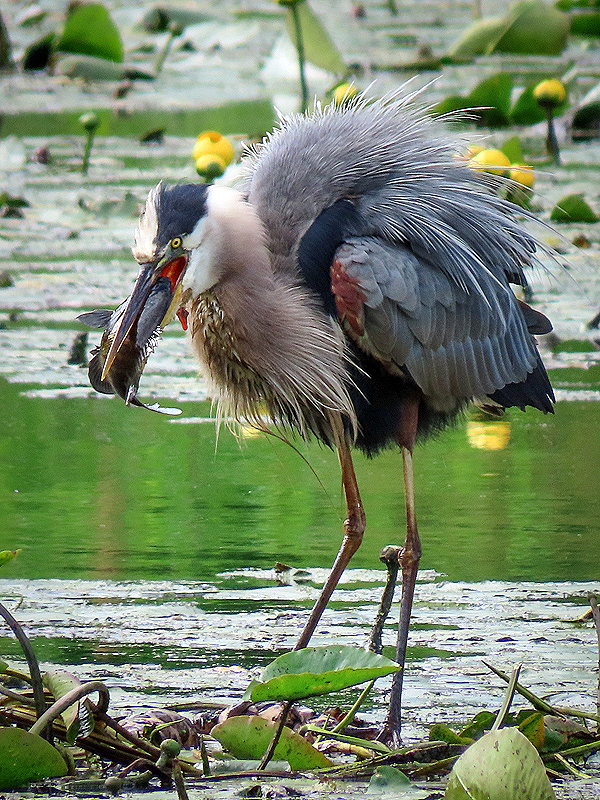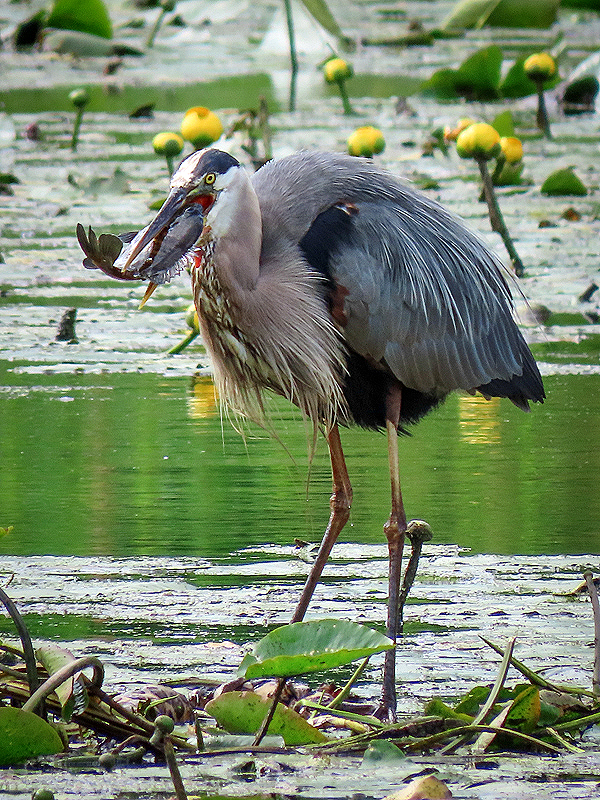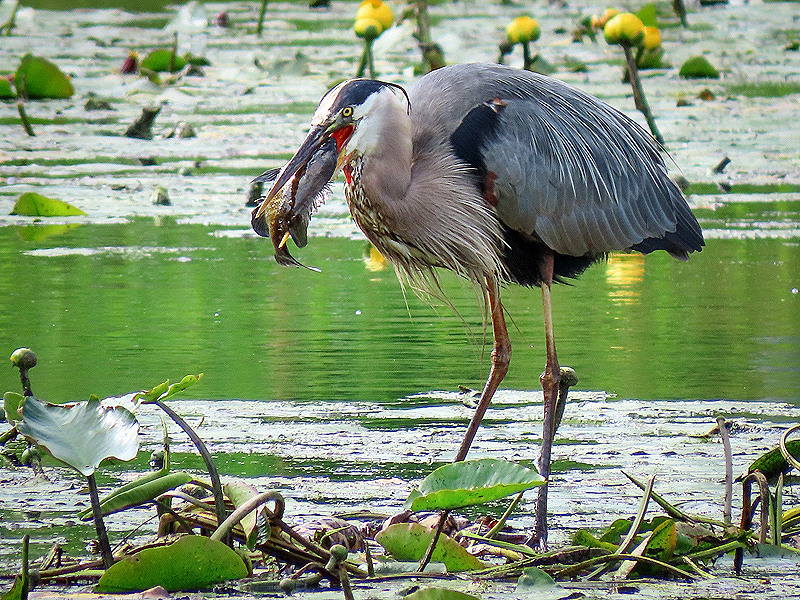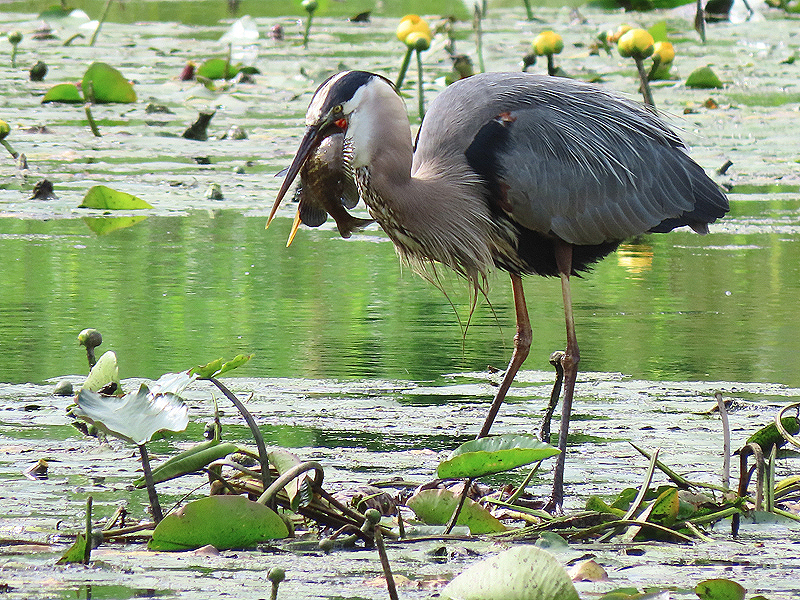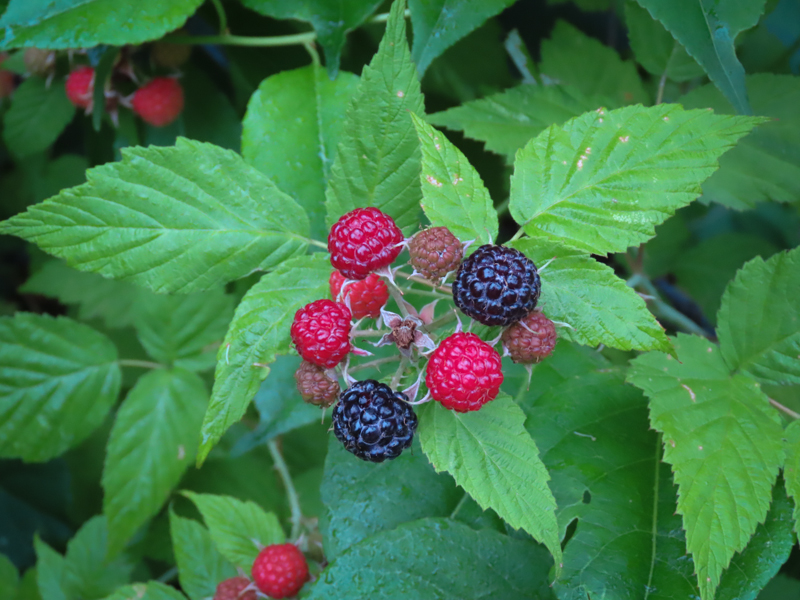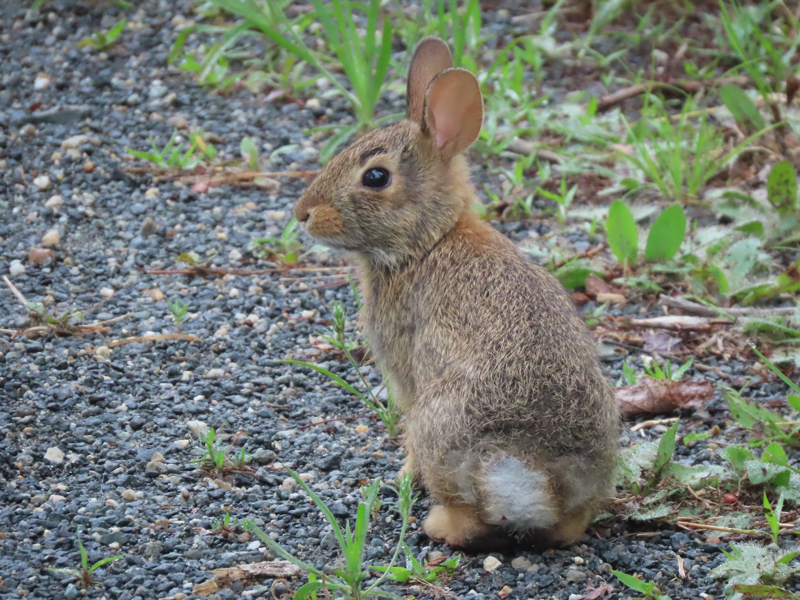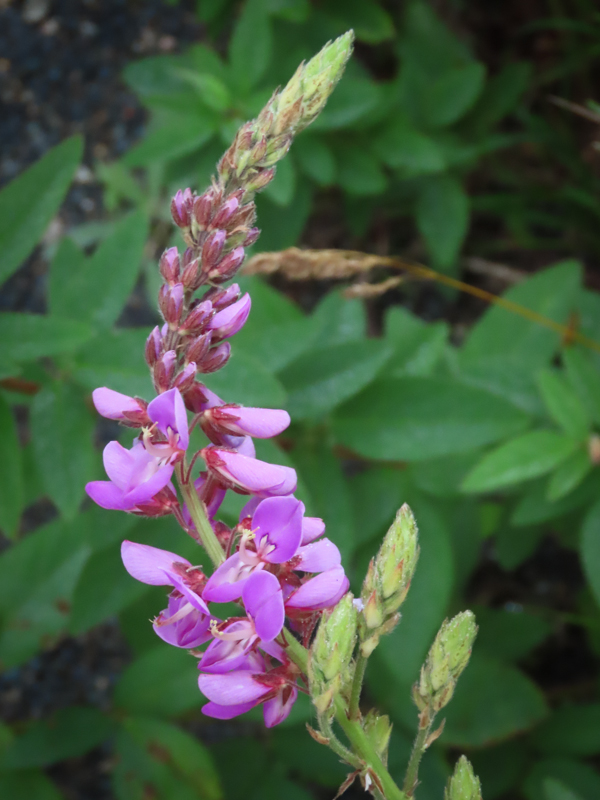Along the Air Line... 2023 - Summer, Part 2 The Air Line Trail in Eastern Connecticut - Stan Malcolm Photos |
HOME: Air Line... 2023 Pages Menu Stan's FlickR Albums |
June 26th. A cloudy, humid walk east of Route 207. Deer Fly (Chrysops sp.) season has begun. |
Note the patterned eyes... |
...and the mouthparts designed to saw open a hole and sponge up the blood. |
Chicory (Cichorium intybus) had just started blooming. |
|
|
|
|
Bumble Bee (Bombus sp.) on Common Milkweed (Asclepias syriaca). |
|
|
Red Milkweed Beetle (Tetraopes tetroophthalmus) feeding on a Milkweed flower bud. |
The upper beetle in this photo has bitten through the leaf's midrib, allowing the toxic latex to dribble out. Then she started feeding distal to the cut since the latex has drained away from that area. |
The second beetle has moved up beside her... |
...and initiated sex. |
The female returned to feeding on the leaf. |
Spotted Touch-me-not or Jewelweed (Impatiens capensis). |
The seed pods are stressed such that when touched they spring apart, shooting the seeds some distance away. |
Eastern Kingbird (Tyrannus tyrannus). |
June 27th. The first few flowers on the Poke Milkweed (Asclepias exaltata) have opened. |
Frostweed (Helianthemum canadense). |
First Canada Lily (Lilium canadense) just opened. |
The anthers have still not exposed all the pollen. |
Virginian Tiger Moth (Spilosoma virginica). |
Its furry caterpillar is called the Yellow Bear. |
An afternoon visit to the Cobalt section east of Depot Hill Road. Thistles will be blooming soon. |
Crown Vetch (Securigera varia). |
|
Cabbage White butterfly (Pieris rapae) on Rough-fruited Cinquefoil (Potentilla recta). |
|
Japanese Honeysuckle (Lonicera japonica). |
Black-eyed Susans (Rudbeckia hirta). |
Cuckoo Bee (Nomada sp.) on Fleabane. |
Weevils (Family Curculionidae) on Fleabane too. |
A male root-boring Longhorn Beetle (Prionus sp.). The larvae live in roots of deciduous trees. |
Green Frog (Rana clamitans). |
A female Widow Skimmer dragonfly (Libellula luctuosa). |
|
Birdfoot Trefoil (Lotus corniculatus). |
Flowers turn orange as they fade. |
Next stop, Cranberry Bog. A Great Blue Heron (Ardea herodias) that I've seen there summers for at least three years. |
I recognize it by the stub of its tongue which protrudes from the neck below the head. It not only survives... |
...but does very well for itself catching fish. |
Looks like a Bluegill (Lepomis macrochirus). |
|
|
The bird seems frustrated trying to swallow the fish... |
|
|
...but shortly after this photo, it got it down. |
June 28th. The berry bushes near the Route 85 parking area have revealed themselves as Black Raspberries (Rubus occidentalis). |
A young Eastern Cottontail (Sylvilagus floridanus) displaying its cotton tail. |
Showy Tick-trefoil (Desmodium canadense) has just started blooming. |
